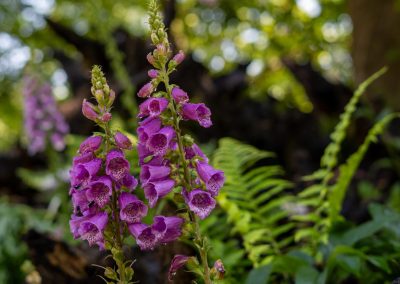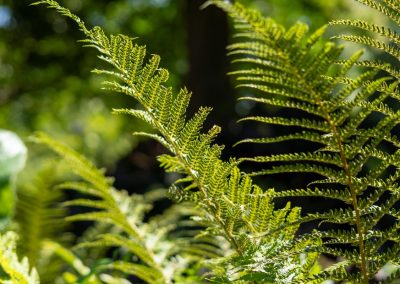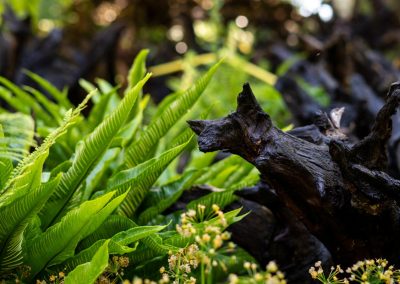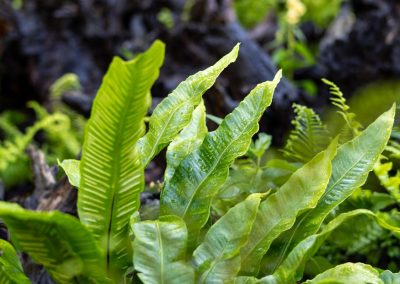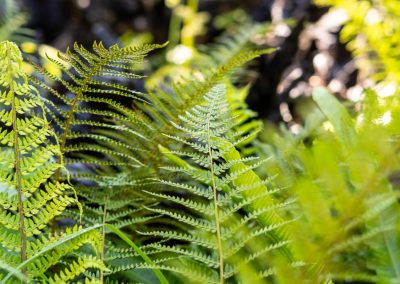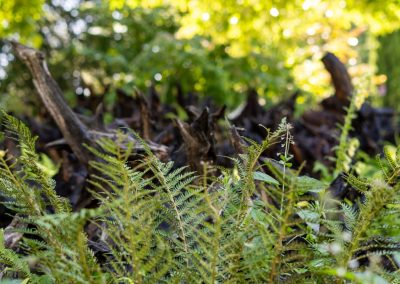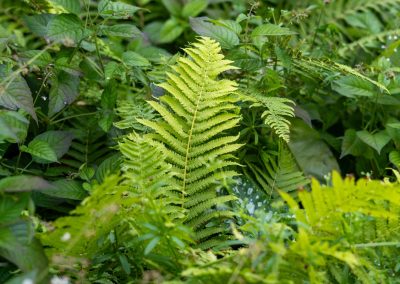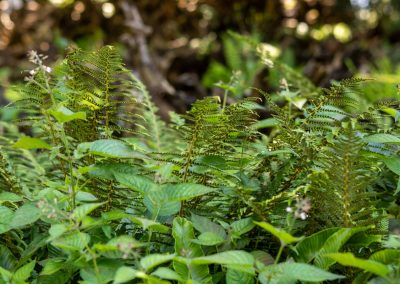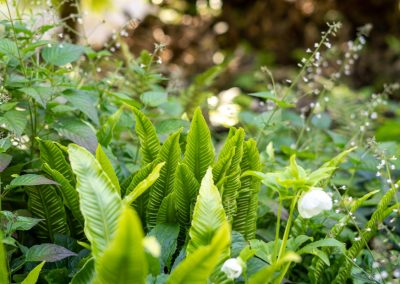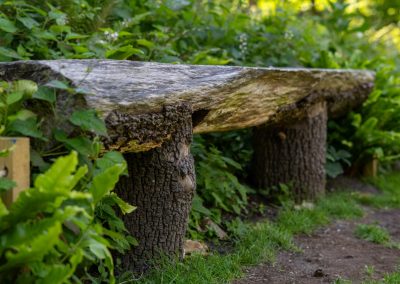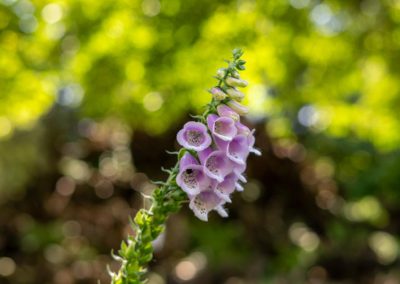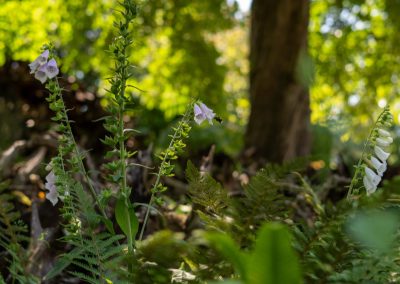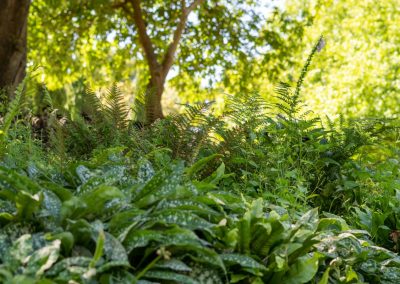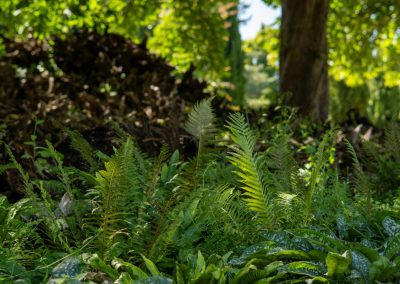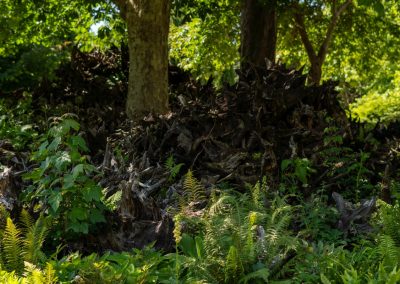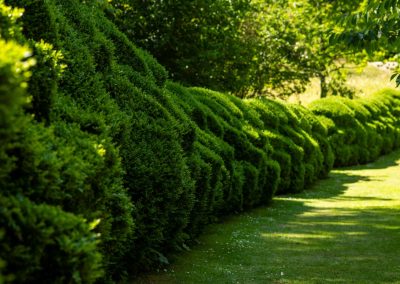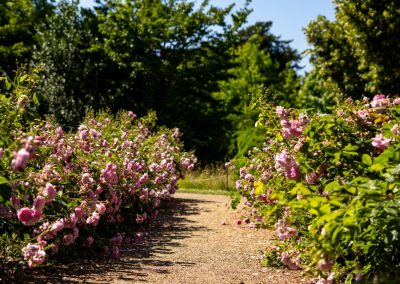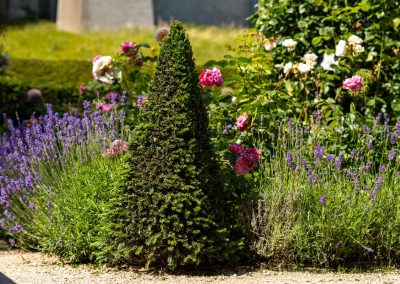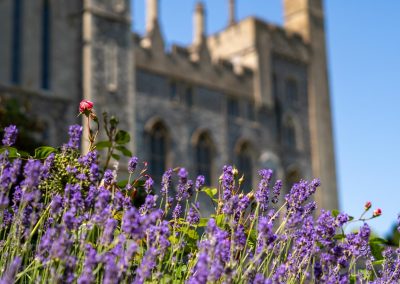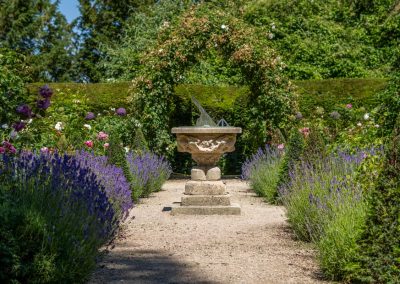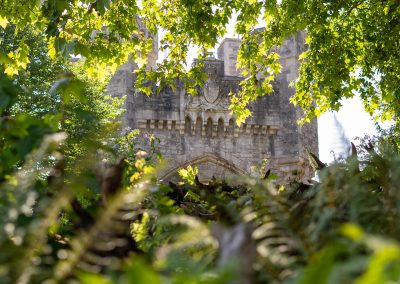Arundel Castle Woodland Stumpery
Greenwood supplies plants to historic Sussex landmark
Overview
Arundel Castle, located in West Sussex, is one of England’s longest-inhabited stately homes, with a history dating back to 1067. Set against the backdrop of the South Downs and overlooking the River Arun, the castle is a major visitor attraction, known for its rich heritage, impressive interiors, and stunning gardens.
The gardens at Arundel Castle combine formal design with naturalistic planting and seasonal highlights, including their renowned tulip displays. In recent years, Head Gardener Martin Duncan has introduced several new features to enhance the visitor experience. One of the most distinctive is a newly created stumpery, built using upturned roots from fallen trees on the estate. This shady, woodland-style feature offers a striking contrast to the surrounding gardens and encourages biodiversity.
“Having created a botanical stumpery within the Walled Gardens back in 2012, I thought it would be great to design a Woodland Stumpery in a location that would both highlight the dramatic background of the ancient castle walls and give our visitors a unique garden feature on their way up to the other gardens.”
Greenwood supported the project by supplying a selection of shade-tolerant plants suited to the character and growing conditions of the stumpery. The contribution has helped to establish a rich, textured underplanting that complements the natural structure of the space.
In addition to the stumpery, Greenwood has also supplied a variety of different lavender species, which have been planted in multiple areas around the site, as well as topiary cones, which have been planted within the rose garden.
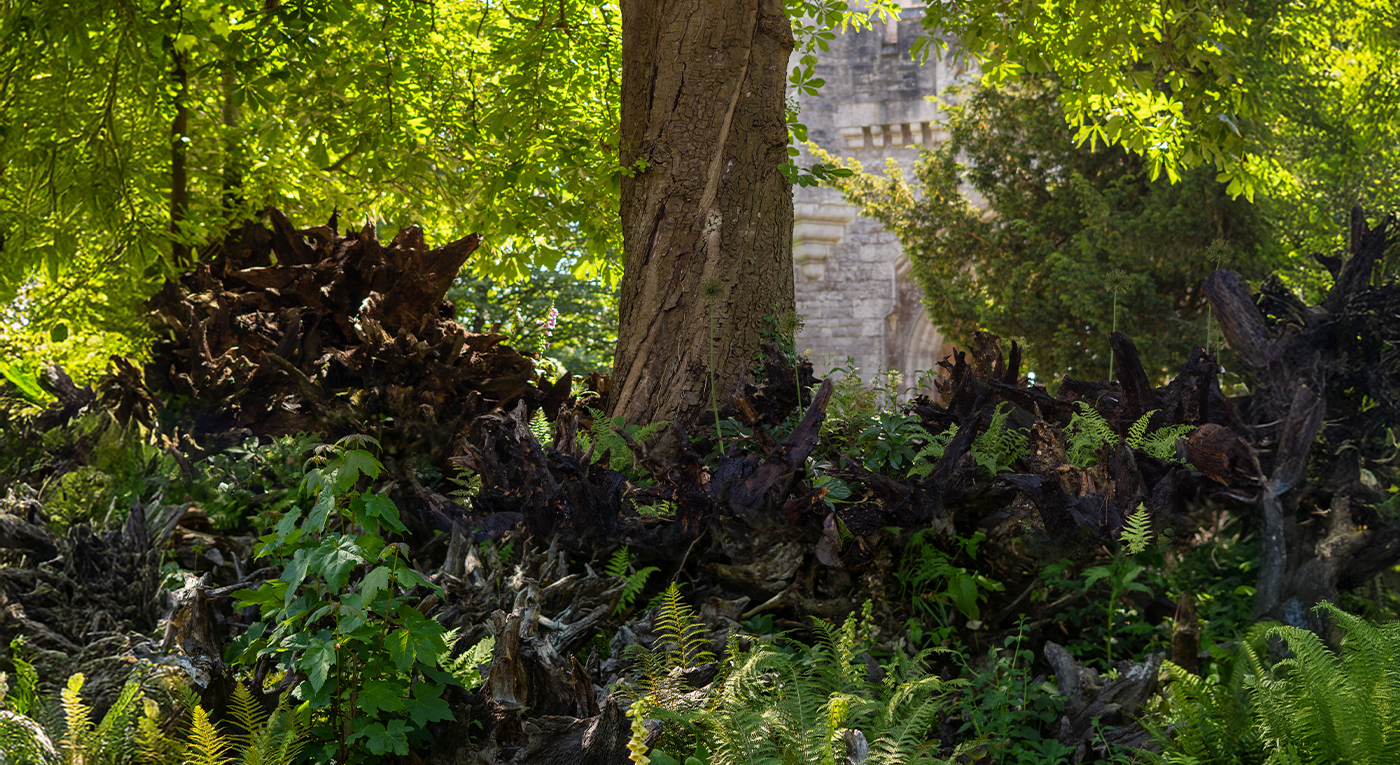
Client: Arundel Castle
Project: Arundel Castle Woodland Stumpery
Location: West Sussex
The Brief
Arundel Castle is renowned for its stunning gardens, which have been expertly designed and meticulously maintained by a gardening team with a wealth of knowledge and experience. As such, the project demanded the highest quality of plants to match the grandeur of the gardens. The Woodland Stumpery, being situated underneath a relatively dense tree canopy, required a variety of shade tolerant plants, including ferns and foxgloves. In addition to this, the varieties that were planted needed to be pollinator friendly, ensuring there were plenty of native species, as the aim of the stumpery project was to help boost biodiversity around the grounds of the castle. The project has been designed with sustainability and biodiversity in mind, including using reclaimed wood from trees on the Arundel Castle estate to make benches, and overturned stumps from felled trees for the stumpery. The stumps of the trees will provide a perfect environment for many different kinds of wildlife, offering shelter and nutrients to birds, insects, and other animals.
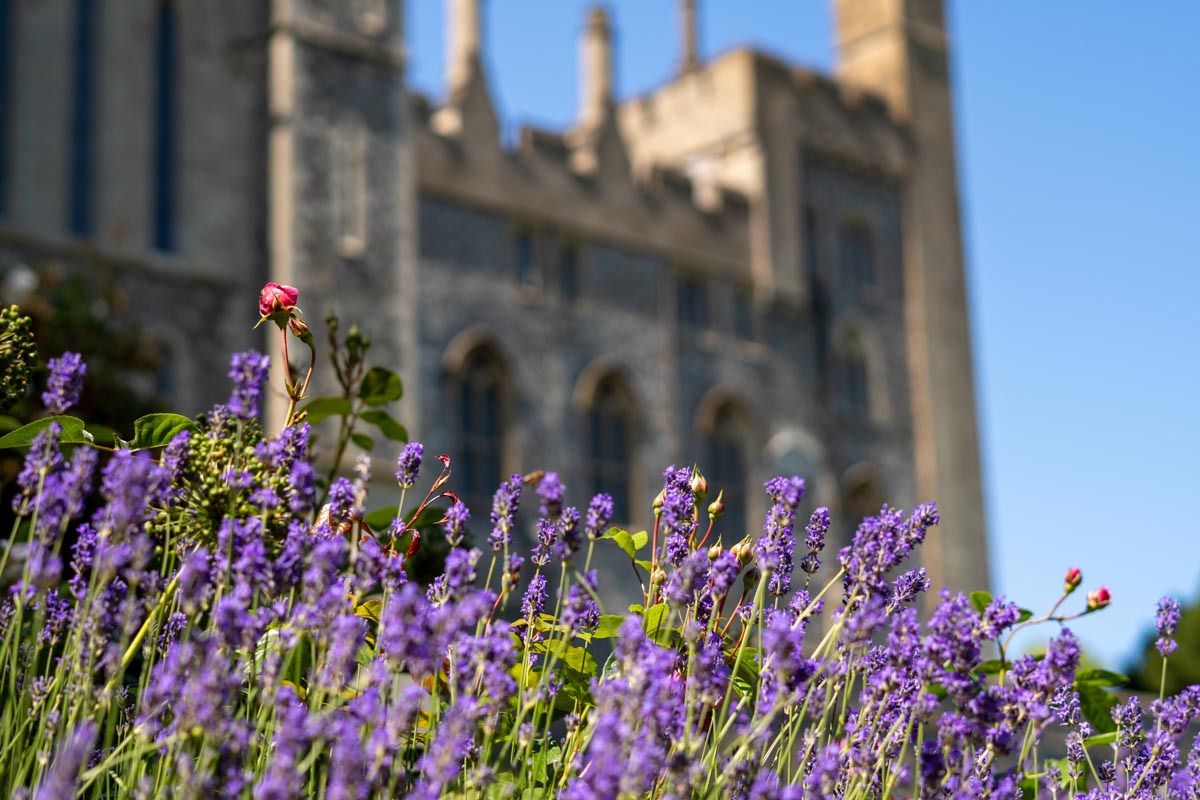
Our Approach
A variety of different ferns were supplied for the project, including Dryopteris affinis, which is a UK native fern that grows in a rosette shape with upright, divided fronds reaching up to 1.2 metres long. They thrive in a variety of conditions, from full sun, to full shade. They suit shade best to avoid scorching on the leaves from the sun. addition to this, several varieties of Polystichum were used, including the UK native Polystichum setiferum, which is an evergreen fern with soft, feathery fronds that form a graceful rosette. It thrives in shady, sheltered spots and adds year-round texture and structure to borders or woodland planting schemes such as the stumpery. In addition to the ferns, a number of mixed Digitalis plants were used in the scheme, to provide colour and contrast to the scheme. More commonly known as foxglove, Digitalis is a native UK plant admired for its tall spikes of tubular flowers in shades of purple, pink, and white. It grows well in semi-shaded areas such as woodland edges, hedgerows, and natural garden borders. Being UK native, it is important for biodiversity, as their deep, nectar-filled flowers attract bees and sometimes butterflies during late spring and early summer. Beyond feeding pollinators, Digitalis provides shelter with its large leaves and adds height and seasonal interest to wildlife-friendly planting schemes. For winter interest, a number of winter-flowering Helleborus orientalis have also been planted, to ensure pollen and colour all year round. Despite not being native, it provides a valuable source of nectar for bees during the winter months, enhancing the overall appeal of the planting scheme to pollinators.
In addition to the Stumpery, Greenwood supplied plants to various other areas of the extensive Arundel Castle gardens. In the rose garden, which features a variety of species of roses from renowned grower, David Austin Roses, Taxus baccata topiary was used for architectural interest along the borders of the garden paths forming a natural barrier between the public and the roses. Taxus baccata is a slow-growing evergreen shrub, with a dense growth habit, which makes it perfectly suited for hedging, as well as being trained into topiary shapes. Not only that, but its dense habit provides valuable shelter for wildlife. In this instance, topiary balls were used along the path, with tall cones for the corners. The cones have then been further clipped to form a pyramid shape by the Arundel Castle team, adding some lines and edges to the garden design.
As well as the topiary, a variety of species of Lavandula were used in a number of locations across the site, including the rose garden, and the kitchen garden. In particular, Lavandula angustifolia ‘Munstead’ and ‘Hidcote’ was chosen. Whilst not native to the UK, both species are extremely commonly planted all over the UK, and are extremely popular with bees and other pollinators, making it an ideal choice for biodiversity.
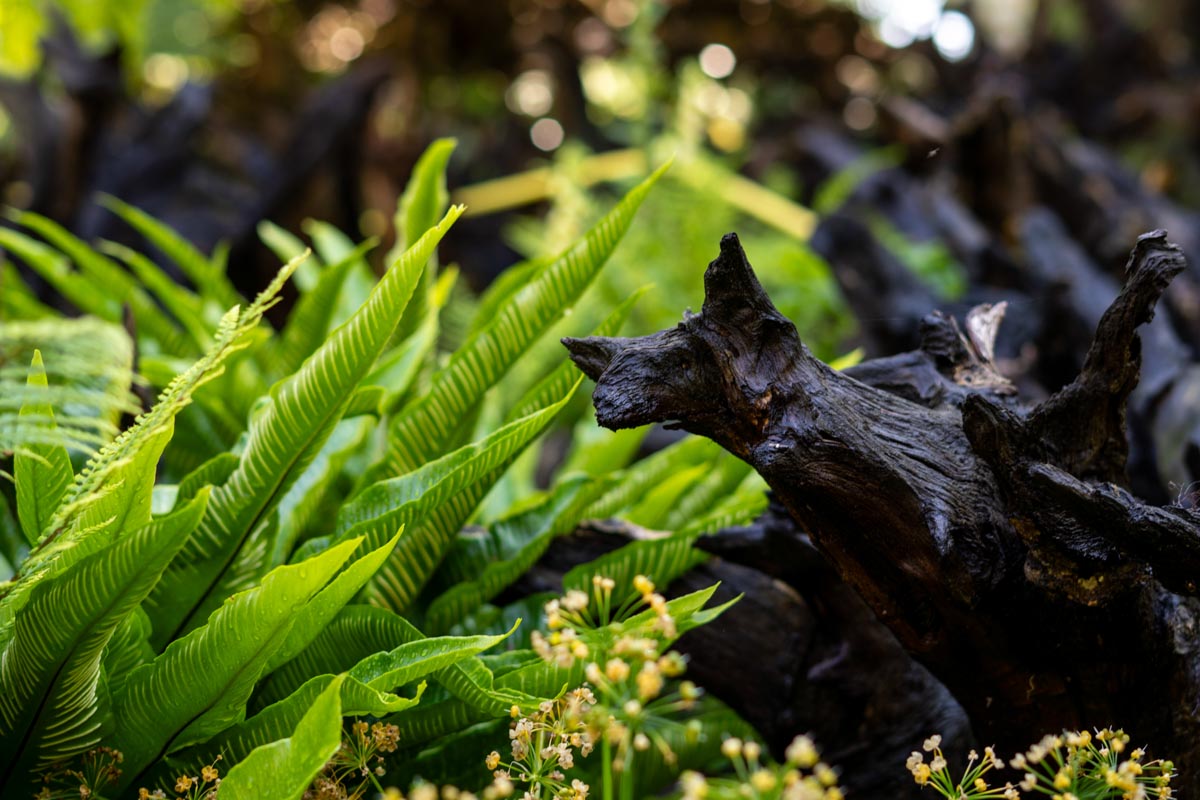
The Result
The Stumpery has become an incredible centrepiece to the estate, providing a fascinating wildlife haven set against the background of the castle itself. The variety of ferns and perennials amongst the twisting roots of the stumps provides a juxtaposition of textures that is not only visually intriguing, but also a valuable haven for birds, insects, and other creatures, who can find shelter within the tree stumps, and nutrition from the plant life. Martin Duncan, the Head Gardener for Arundel Castle Gardens, said:
“I have used Greenwood on a number of projects here at Arundel Castle and have found them to be very helpful in sourcing the right plants. Whether it’s been Yew Balls and Cones used to form structures, or Ferns for the Woodland Stumpery, everything has been of good quality and delivered on time.”
With regards to the future plans for the Stumpery, Martin said:
“Over the next winter and spring we will do some minor adjustments. Our visitors are loving this new feature to the castle landscape, especially as it now highlights the dramatic backdrop of the castle walls behind.”
As a result of the garden team’s incredible work across the entire estate, Arundel Castle has been shortlisted for Historic Houses Garden of the Year Award 2025, competing with seven other historic estates across the UK. The winner will be decided by a public vote, which ends 31st August 2025, so if you would like to vote for Arundel Castle for this prestigious award, you can do so here.



